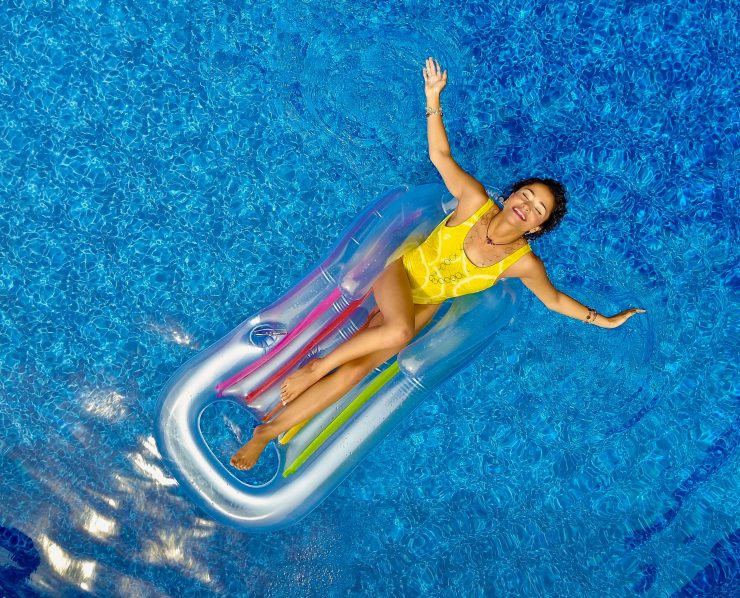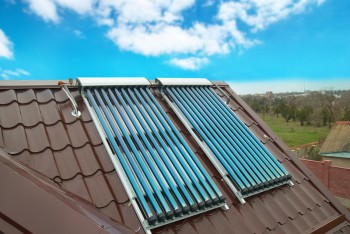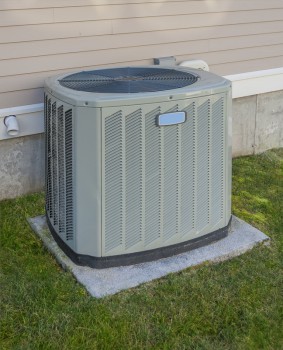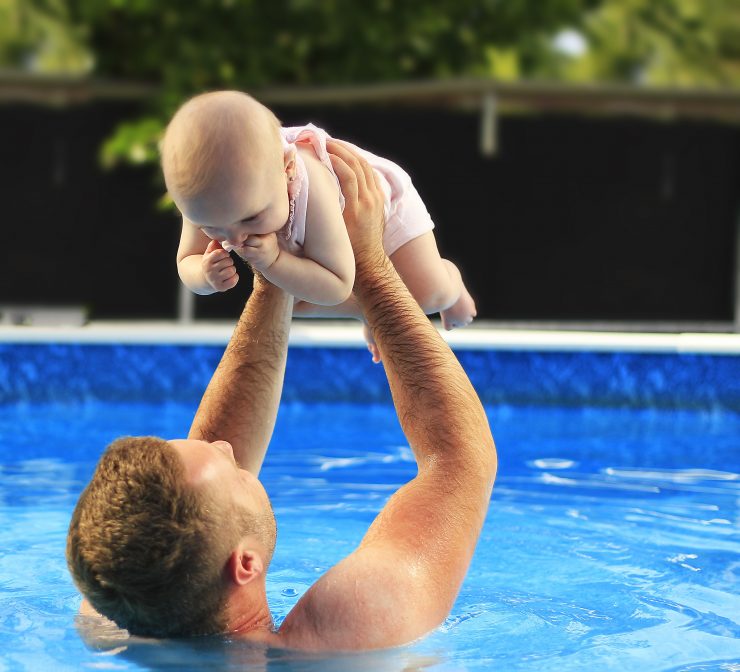
Solar pool heating or pool heat pumps? Both are efficient, environmentally sound, and cost-effective methods of heating your pool. But which is better? Let’s compare the two systems.
Article Contents
Solar Pool Heating

The way they work is by pumping water from the pool and conducting it through a series of flexible tubes or else through a series of panels – otherwise known as, in either case, a solar collector. On its passage through the solar collector which is usually mounted on the roof of the house, the water is heated by the sun before being allowed to flow back into the pool.
[cta id=”2833″ vid=”0″]
How Much Does Solar Pool Heating Cost to Install?
Since the size of the solar collector area depends entirely on the size of your pool, the purchase price of the solar heating system will vary. A basic system will range from about $1,000 to $5,000. Equally, and again depending on the size of the pool, installation costs can be expected to run from around $600 to about $2,500.
However, assuming a standard size 8m x 4m backyard pool, a solar pool heating system is likely to cost approximately $2,500 to purchase, and another approximately $1,300 to install – a fully installed cost, therefore of about $3,800.
How Much Does Solar Pool Heating Cost to Run?
Virtually nothing. Since the solar energy is free, the only costs of running a solar pool heating system are those required to run the pool pump. At an average of around $0.23 per KW hour, this should work out to less than, $1.00 per day.
How Effective is Solar Pool Heating at Actually Warming the Water?
Solar pool heating is only as effective as the amount of direct sunlight that is shining on the solar collectors. Solar pool heating doesn’t work at night, and is severely limited by cloud cover or shade.
In addition, the effectiveness of the solar panels is determined by a number of factors; not least of which is its size in relation to the pool – it needs to be at least 80%, and preferably 100% of the surface area of the pool. In addition, it ideally needs to be oriented north for maximum effect.
What’s more, solar pool heating takes time, and it certainly doesn’t heat the pool on demand. Depending on the time of year, it can take anything up to a week or more for solar heating to raise the temperature of your pool to 28ᵒ C. In warmer times of the year, a solar heating system will increase your pool temperature by 2-3.5ᵒ C per day. A pool blanket is essential to trap all this heat.
I recommend this pool cover.
What Are the Pros and Cons of Solar Pool Heating?
The great attraction of solar pool heating is, of course, that sunlight is a totally free and natural resource; it’s the environmentally friendly way to heat your pool.
The downside, however, is that the solar collector takes up a fair amount of space, it needs the right orientation, it won’t work at night, is limited by weather and shade conditions, and it’s relatively slow in terms of heating the water.
That having been said, once you actually bought and installed the system, it’s virtually free to run. I’m also a little partial to solar since I know first hand how well the systems can work – my kids love the pool in summer.
Pros and Cons of Solar Pool Heating
| Pros | Cons |
| Free Energy | Collector Panel Size |
| Environmentally Friendly | Collector Panel Orientation |
| Very Low Running Costs | Only Heats by Day |
| Weather Dependent | |
| Affected by Shade |
For more detailed information, read our article Solar Pool Heating.
Pool Heat Pumps

The astonishingly simple thing is that they work in the same way as a refrigerator – except in reverse. The heat pump is equipped with a fan that sucks in warm ambient air from the surrounding atmosphere. The air is then passed through a piping system within the heat pump. This piping system is filled with a non-CFC refrigerant which has a boiling point of -26ᵒ C.
The result is that the warm air causes the refrigerant to super-heat, and this heat is immediately transferred to the pool water which is, at the same time, circulating from the pool, through the heat pump, and back into the pool.
The simply astonishing thing is that pool heat pumps produce far more energy in terms of heat that it takes to run them in terms of electrical energy.
How Much Do Pool Heat Pumps Cost to Install?
Pool heat pumps are reasonably expensive to purchase. For a standard 8m x 4m backyard pool, prices tend to range from around $4,500 to $6,000.
The good news, however, is that installation is pretty straightforward and will likely only cost something in the region of $400.
How Much Do Pool Heat Pumps Cost to Run?
While they are by no means as cheap as solar pool heating in terms of running costs, pool heat pumps are still pretty reasonable – especially bearing in mind the performance they deliver.
That’s because pool heat pumps are astonishingly efficient when it comes to using energy: so efficient, in fact, that for every 1kw of energy they consume, they produce 5kw of heat!
As a result, for a standard 8m x 4m backyard pool located between southern QLD and central NSW, the running costs are going to be in the region of approximately only $500 a year.
That is, of course, assuming you’re using a pool cover to keep the heat in at night – without a pool cover the running costs will be nearer $1,000 a year.
How Effective are Pool Heat Pumps at Actually Warming the Water?
Pool heat pumps will deliver heat to your pool water much, much more quickly than solar pool heating systems. Where solar pool heating might take up to a week or more to bring a pool from a standing start at the beginning of the season to 28°C, a pool heat pump will only require a couple of days.
In fact, if you’re planning a pool party during the summer or even in the shoulder months of the season, you can turn your pool heat pump on the evening before and your guests will be splashing around in warm water the next morning.
The other factor that influences how effective your heat pump is, is the if you run your heat pump in the nighttime or daytime. We have a full article covering this here:
When Is the Best Time to Heat Your Pool? Day or Night?
What Are the Pros and Cons of Pool Heat Pumps?
Pool heat pumps don’t deliver quite the same amount of almost instant heat on demand that a gas heater will deliver, but they do it at a fraction of the price. They’re also easy and inexpensive to install, and they’re environmentally friendly.
That having been said, pool heat pumps do rely on the ambient air temperature. Given the incredibly low boiling points of their refrigerants, most are designed to operate quite happily even at ambient air temperatures as low as 7°C. However, there can be a risk of mechanical failure caused by ice building up on the condensers inside the system.
Pros and Cons of Pool Heat Pumps
| Pros | Cons |
| Very Energy Efficient | Expensive Purchase Price |
| Fairly Environmentally Friendly | Not As Fast As Gas Heaters |
| Reasonably Low Running Costs | Ambient Air Temperature Risks |
| Relatively Fast | |
| Reasonably Low Installation Costs |
You can read more in our article on pool pump heaters.
So, How Do You Choose One Over the Other?
When it comes to deciding between solar pool heating verse heat pump heating, it all depends, as with so many things in life, on what you want and what you’ve got in your wallet.
Solar pool heating isn’t as fast, but it’s very environmentally friendly and virtually free to run. Pool heat pumps heat the water much more quickly and are more environmentally sound when compared to power-guzzling gas heaters.
In terms of the environment, therefore, both are good. Solar pool heating ranks top; but pool heat pumps are an honorable second place. They are, at time of posting this, regarded as a renewable energy source by the Australian government and, as such, they can qualify for Renewable Energy Certificates (REC’s, also known as Small-Scale Technology Certificates or STC’s). Which means, depending on where you live and market conditions, you may be able to claim rebates worth around $300-$500.
In terms of delivering heat to our pool, especially without too much waiting and more or less when you want it, the pool heat pump wins hands down.
In terms of what you’ve got in your wallet, for an 8m x 4 m pool, a fully installed solar heating system will set you back around $3,800; a pool heat pump system will come in at around $5,650. If you amortise that and add in the running costs over a 10 year period, solar heating is likely to work out around $430 per year; a pool heat pump at around $1,065 per year.
Have Your Cake and Eat It, Too!
Of course, it needn’t be a case of one OR the other. There’s absolutely nothing to stop you having both types of heating systems for your pool.
A pool heat pump can kick-start your pool water temperature in a couple of days at the start of the season; then the solar can take over to maintain the temperature. If you need an extra kicker – say in the cooler, shoulder months of the swimming season, or else for a morning plunge, the pool pump can be brought back into service.
And, since both systems are environmentally sound, if you decide that when it comes to deciding between solar pool heating or a heat pump you can have your cake and eat it too, you needn’t feel any guilt for the extra indulgence.



A well written very balanced article. But on the con side for solar is the destruction wrought by Cockatoos. We had a Sunbather system installed in 1990 and I’ve just removed it from the tiles roof. The tubular material is a credit to the inventors, designers and manufacturers. It was still firmly glued 25 years after installation, it was supple and strong, not deteriorated in any way.
But from the day it’s was installed it was subject to Cockatoo attacks which basically meant the system had to be retired within a year or two. These birds bit through the tubes and, if the system is running, play in the huge spurts of water that are emitted. They communicate and congregate making great sport of the destruction of the tubes everywhere on the roof. Our system cost $4000 in 1990, cost several lots of about $700+ over the years to repair the damage. It’s not easy to repair, the tradesmen of tent have little idea what they are doing, they break tiles on the roof with disastrous results when it rains.
All in all I could not possible recommend a system which is subject to Cockatoo attack. The only way we deterred them – we think – was to mount heavy duty rat traps on the system which also attracted their curiosity. After a few whacks on the skull with the trap they seemed to share the idea that this roof was cursed and they took off.
In the meantime rusted gutters, rusted roof fittings, valleys, solar pipe manifolds support racks, rusted steel deck roofing all due to saltwater emanating mainly from leaks due to Cockatoos.
Coming home to a pool emptied to the intake point of the solar system and with other pumps, like filter and cleaner motors burned out because they ran dry.
I’ve been looking at solar panels because so many companies claim that they are Cockatoo resistant.
Maybe that’s a good topic to research!